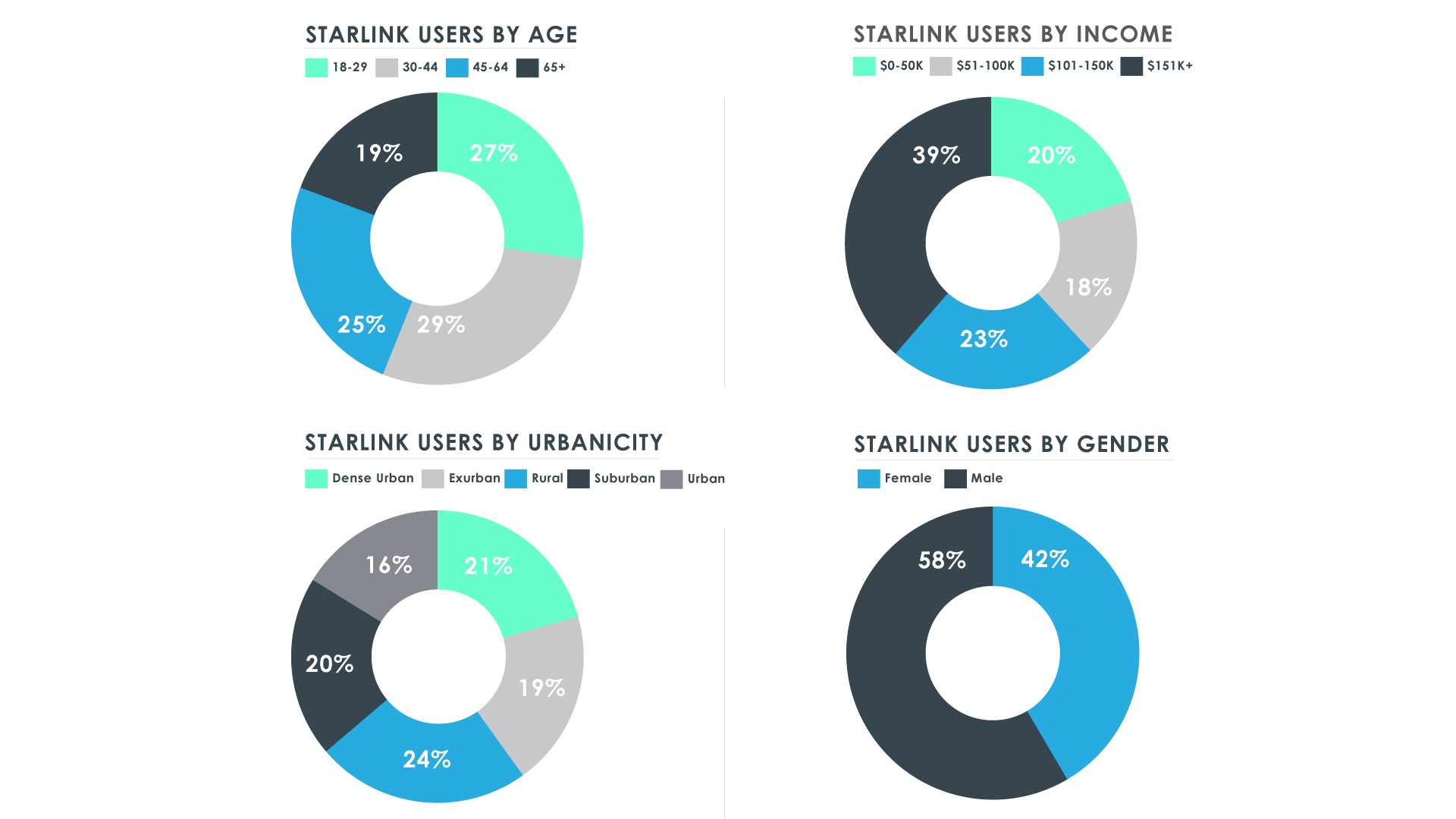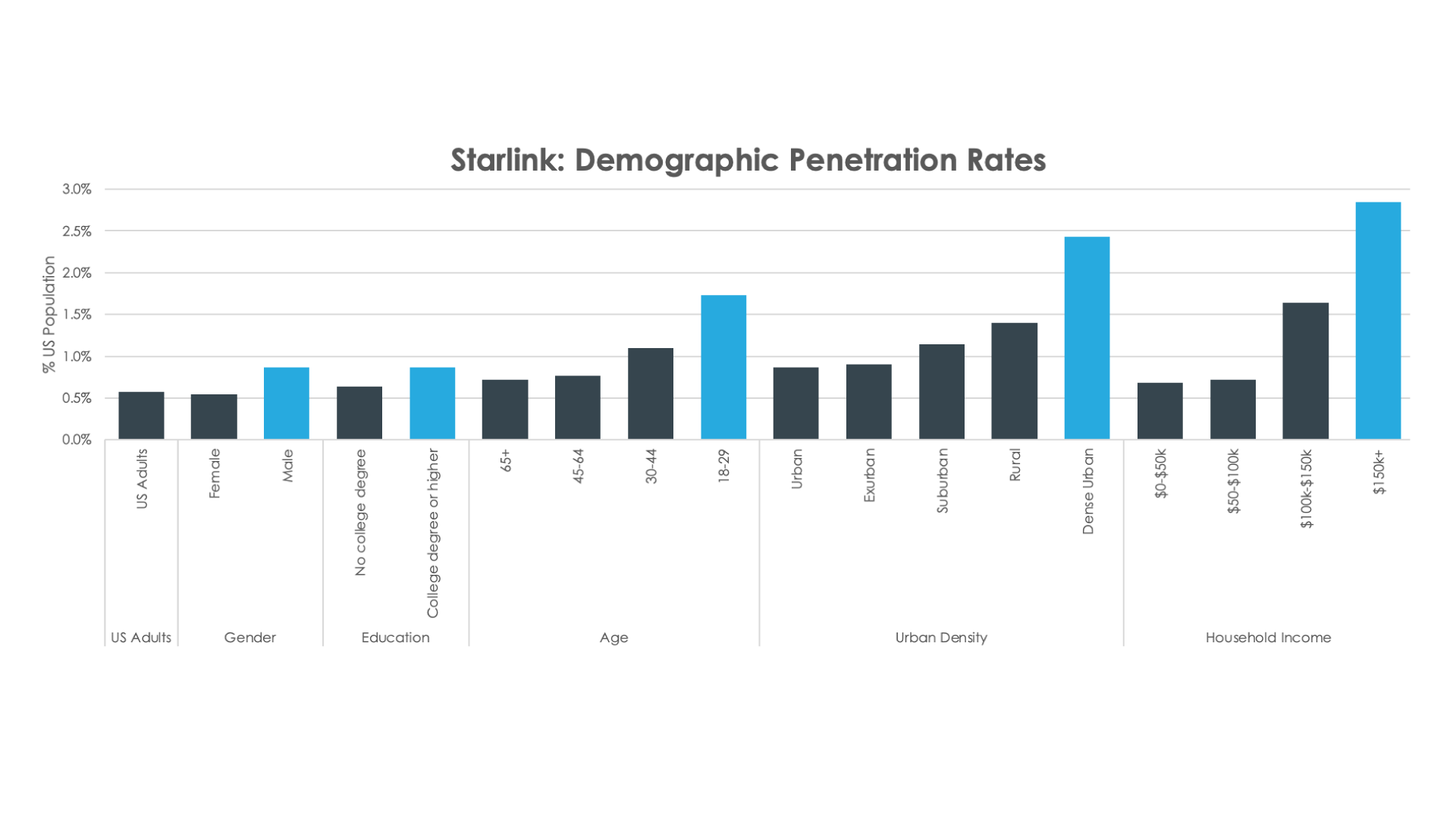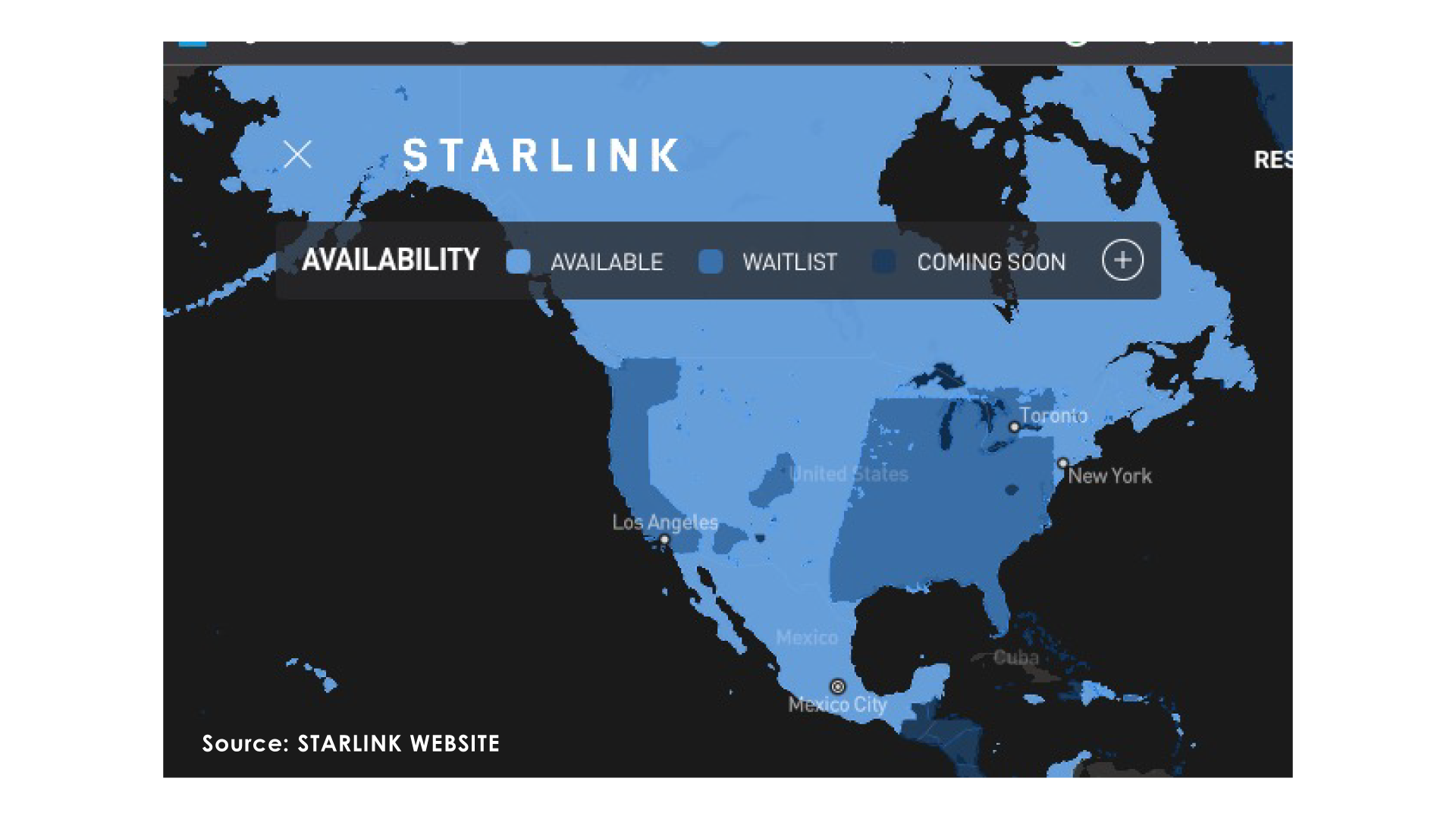
About i360’s Consumer Pulse: The Consumer Pulse asks 1,000, of the 2.5 million US adult panelists, over 150 questions daily. Questions center around key topics such as economy, lifestyle, real estate, automotive, shopping, employment, political opinions, and more.
Founded by Elon Musk, Starlink is a satellite-based internet service provided by SpaceX. Starlink’s mission is to provide global internet coverage, focusing on remote and underserved areas. The service has been in beta testing since August 2020 and has received positive reviews from users. i360’s Consumer Pulse started tracking Starlink since its adoption in August of 2022.
The most surprising outcome of our survey, despite the company’s mission to serve remote and underserved areas, is that the current user base is not heavily rural, as we only see 24% of current users in that demography. In fact, 57% reside in areas with modestly attractive internet options.
Starlink User Demographics

When we analyze Consumer Pulse’s data further, we realize that the demographics of a Starlink customer look more like the demographics of a technology early adopter, rather than a customer who has limited broadband options. These early adopters tend to match the demographics of early adopters we find in other consumer technology products. Starlink is more heavily penetrating high income, young, males in dense urban environments.

As Starlink continues to grow and expand, the question of an Initial Public Offering (IPO) has been raised. An IPO would allow the public to invest in the company and benefit from its success. Elon Musk, CEO of SpaceX, Twitter, and Tesla, has been asked about the possibility of a Starlink IPO in the past, and in a 2019 interview, he stated, “I think it’s quite likely that we will do a public offering for Starlink at some point.” However, he has not provided a timeline and rumors are swirling that 2023 could be the year. The capital provided by a successful IPO could allow the company to expand more rapidly. Their current coverage in the US is expected to expand rapidly with much of the West Coast, the Northeast and the Southeast being lit soon. Fortunately, they will find many more of those early adopters in those areas to boost their user numbers.

Starlink has been making significant investments in the development and deployment of its satellite network, which is now over 3,000 satellites in low Earth orbit. The company will need to prove that it’s not competing against dominant broadband providers like Comcast’s Xfinity or Charter to its investors to justify the high cost of maintaining a satellite network. While the service showed huge success in infrastructure impaired areas of Ukraine, the service is much slower than wired options. If the initial users are just curious beta testers, the odds are they will not stay customers once their curiosity is satisfied. Of course, the service could provide a “backup” internet in a natural disaster scenario, but the current fee of $110 per month is an expensive price to pay for insurance. Also, the high cost is even less likely to be borne by those in truly underserved communities.
Starlink has the potential to revolutionize the internet industry and bring high-speed internet to millions of people around the world. As far as their users though, Consumer Pulse doesn’t see the early adopters as necessarily underserved or remote just yet. To make a case for an IPO, Starlink will likely either need to prove out their core mission, showing success at winning their rural target customer, or they will need to redefine the service for the users they already have. This could mean lower monthly revenue per subscriber to keep users from cancelling (once the Musk shine wears off) and provide affordable back up internet support worldwide.
Disclosure: The information in these blog posts, based on i360’s Consumer Pulse, is for informational purposes only and should not be construed as investment advice on any matter.

